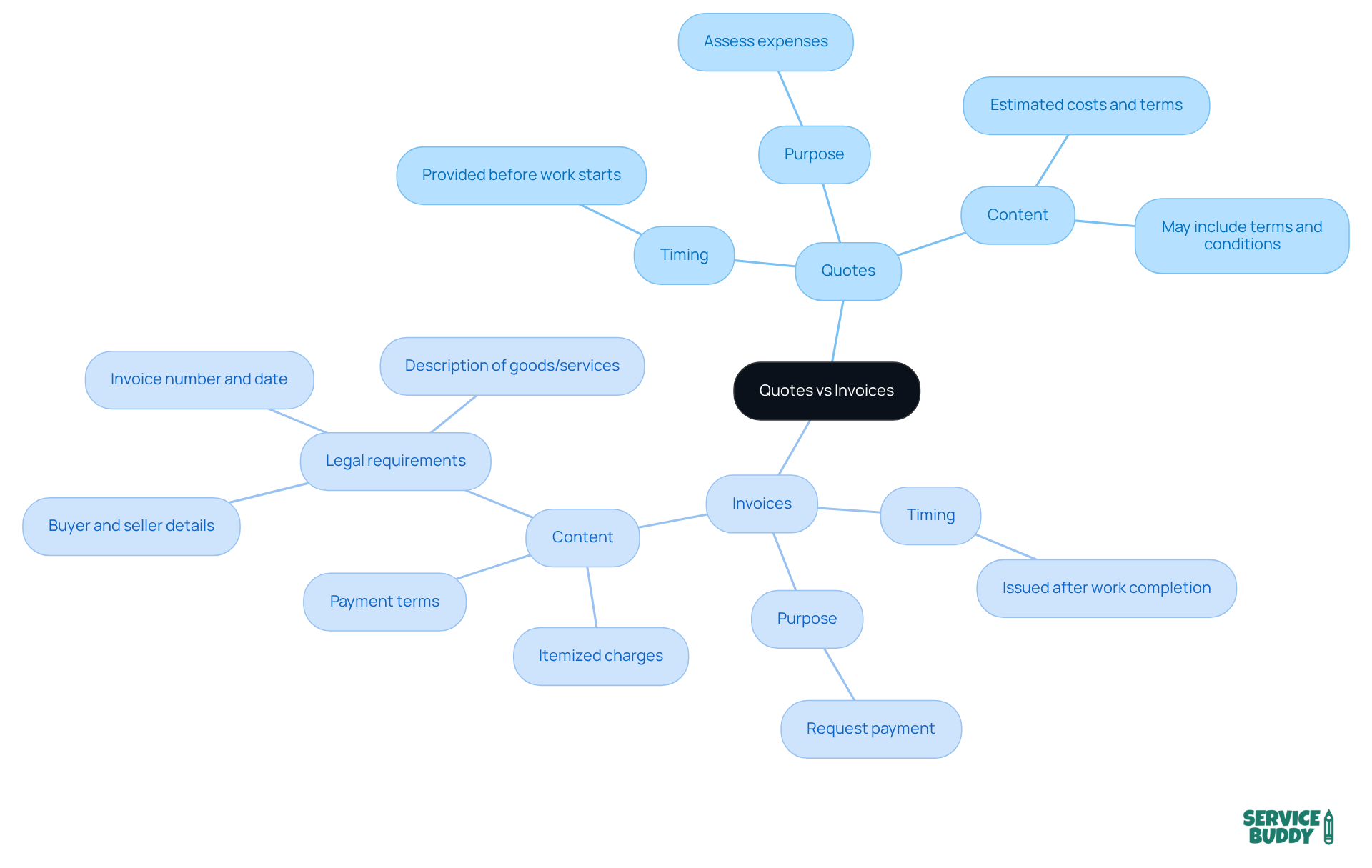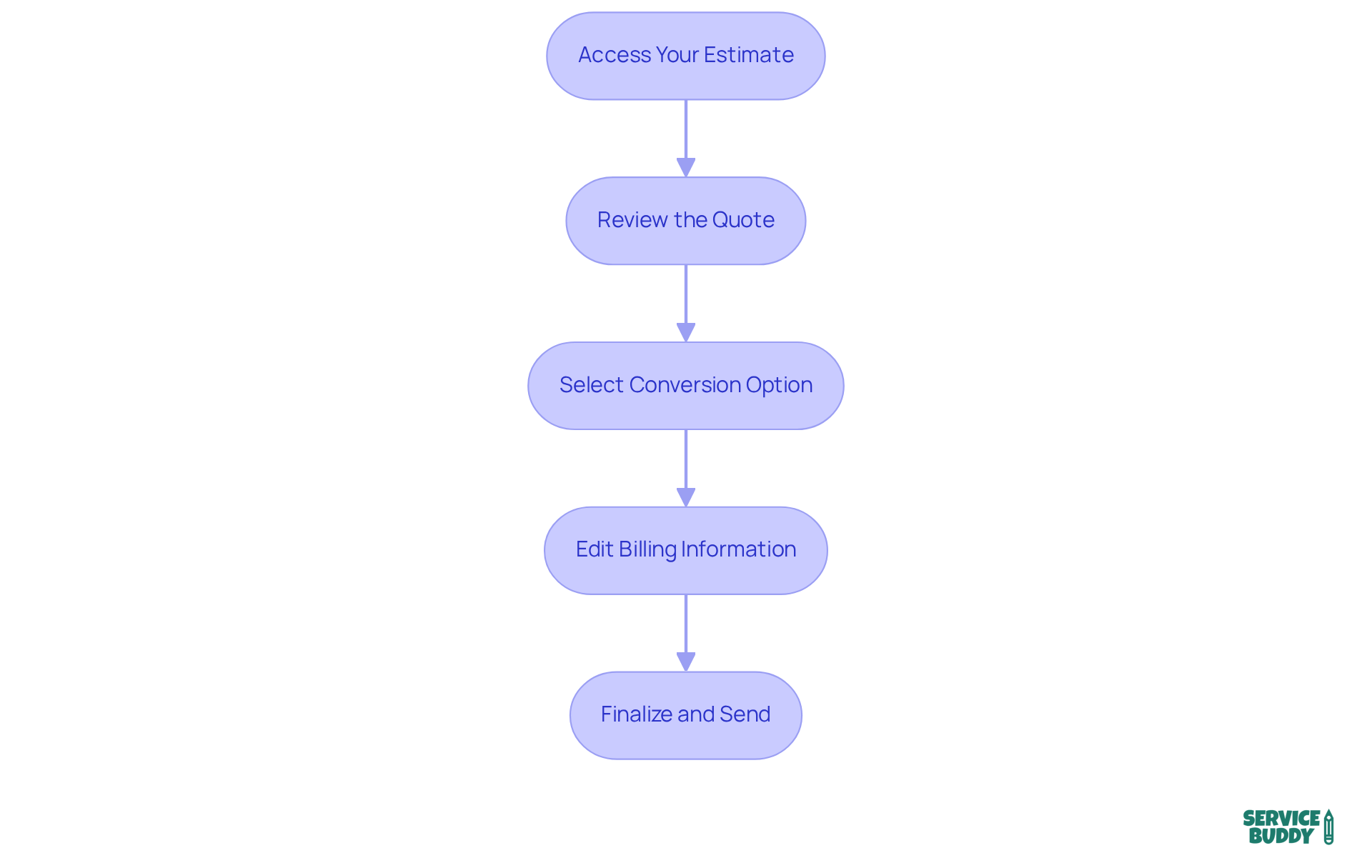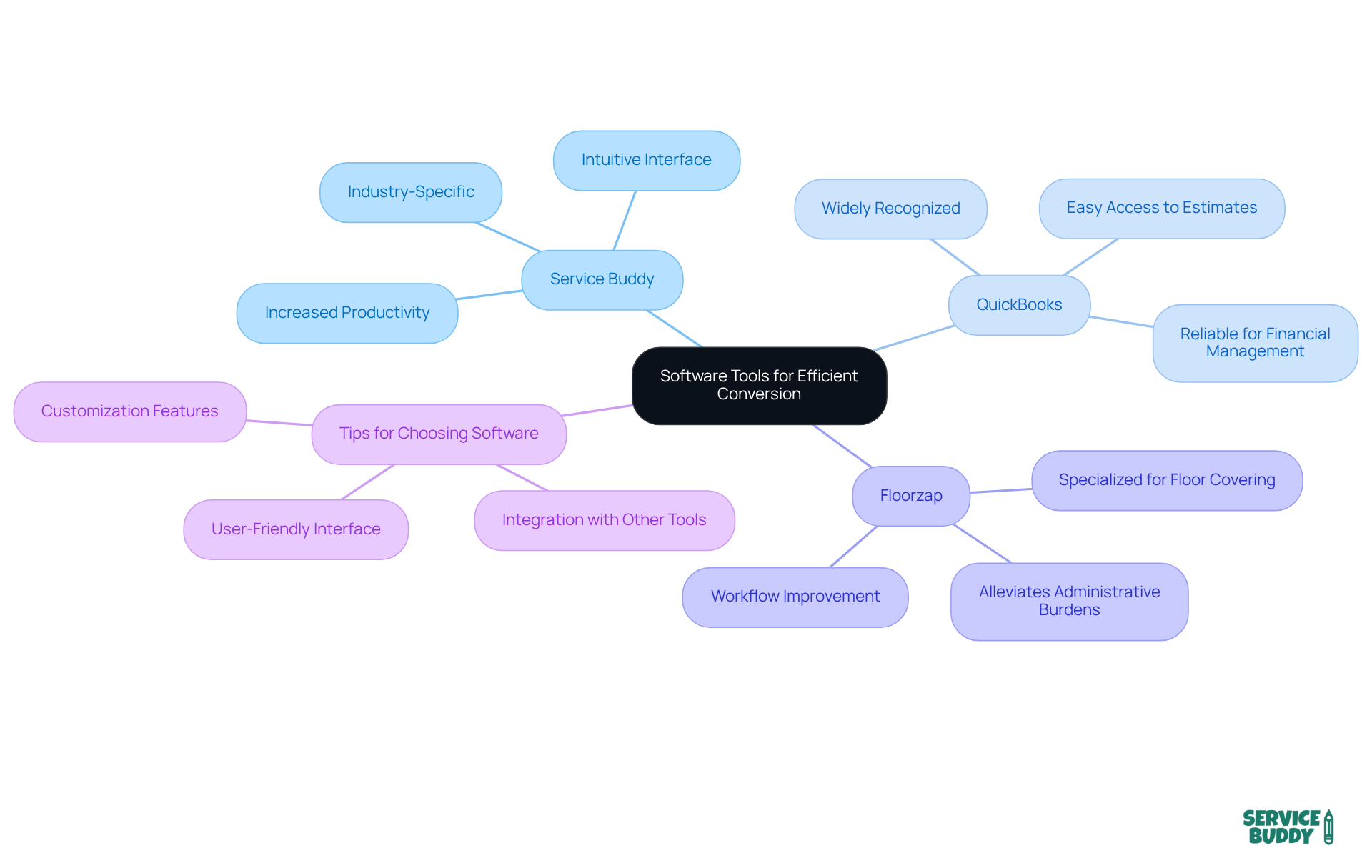Overview
This article serves as a comprehensive step-by-step guide for flooring professionals on converting a quote into an invoice. It underscores the critical importance of accuracy and efficiency in this process. By detailing the necessary steps for conversion, it highlights the benefits of utilizing specialized software tools. Furthermore, it addresses the financial implications of errors and late payments, ultimately showcasing how these practices can significantly enhance cash flow and strengthen client relationships.
Introduction
Understanding the nuances between quotes and invoices is essential for flooring professionals aiming to enhance their business operations. This article serves as a comprehensive guide on converting quotes into invoices, underscoring the benefits of accurate financial documentation and effective client communication. Yet, many professionals fall into the trap of mixing up these crucial documents. So, how can one ensure a seamless transition that minimizes errors and boosts cash flow?
Understand the Difference Between Quotes and Invoices
A quote to invoice is a preliminary document that outlines the projected expenses for a project before any work commences. It serves as a proposal to the client, detailing the services offered and their associated costs. In contrast, a bill is generated after the work is finished, requesting payment for the services provided. It includes itemized charges and payment terms. Understanding this difference is crucial for flooring professionals, as it helps manage client expectations and maintain accurate financial records.
Key Differences:
- Timing: Quotes are provided before work starts; invoices are sent after completion.
- Purpose: Quotes assess expenses; bills request payment.
- Content: Quotes may include terms and conditions; bills must detail the actual services rendered and their costs.
Research shows that a considerable portion of companies mix up estimates and billing statements, which can result in misunderstandings and delays in payments. For instance, effective management of client expectations through clear communication of these documents can enhance trust and satisfaction. By ensuring that estimates are accurate and comprehensive, flooring experts can minimize disputes and streamline their processes from quote to invoice, ultimately enhancing cash flow and operational efficiency. Moreover, using tools such as FreshBooks can streamline the transformation of estimates into billing statements, further improving efficiency in financial management.

Follow These Steps to Convert Your Quote to an Invoice
To convert a quote to an invoice, follow these steps:
-
Access Your Estimate: Open your flooring management software and navigate to the section labeled 'Quotes' or 'Estimates' to locate the estimate you wish to convert.
-
Review the Quote: Verify that all details are accurate, including pricing, services, and client information. Make any necessary adjustments to ensure precision before proceeding. Remember, research shows that 39% of bills contain errors, often arising from manual data entry, making precision essential.
-
Select Conversion Option: Find the option labeled 'Convert to Invoice' in the action menu next to the estimate. This feature simplifies the shift from quote to invoice.
-
Edit Billing Information: After starting the conversion, review the billing details. Adjust any charges based on changes that may have occurred during the project to reflect the final agreement.
-
Finalize and Send: Once all details are confirmed, complete the billing document and send it to the client. Numerous management software solutions for surfaces enable direct communication, improving efficiency.
It's important to note that the average expense of handling a bill manually is $15, while processing a bill electronically costs only $2.36. This highlights the financial benefits of using automated systems. Additionally, late payments can have significant repercussions; a study found that 32% of suppliers would cease doing business with a customer if they experienced late payments. By following these steps diligently, professionals in the industry can minimize mistakes and improve their quote to invoice accuracy, ultimately enhancing cash flow and supplier relationships.

Utilize Software Tools for Efficient Conversion
Employing specialized software can significantly streamline the process of converting estimates into billing statements. Consider these recommended tools:
-
Service Buddy: This comprehensive platform is tailored specifically for the flooring industry, allowing users to manage quotes and invoices with ease. Its intuitive interface simplifies the conversion process, ensuring both accuracy and efficiency. Flooring professionals have reported heightened satisfaction with their operations after adopting Service Buddy, citing a reduction in time spent on administrative tasks and an enhancement in overall productivity.
-
QuickBooks: As a widely recognized accounting software, QuickBooks offers functions for transforming estimates into billing statements. Users can easily access their estimates and select the conversion option, making it a reliable choice for many professionals in the construction sector who seek efficiency in their financial management.
-
Floorzap: Designed for floor covering enterprises, Floorzap provides tools for managing quote to invoice processes, improving workflow and alleviating administrative burdens. Its specialized features cater to the distinct needs of contractors in the trade, establishing it as a valuable asset in their operations.
Tips for Choosing Software:
- Seek user-friendly interfaces that reduce training time.
- Ensure the software integrates with other tools you utilize for job management and client communication.
- Consider features that allow for customization to align with your specific business needs.
By leveraging these software solutions, flooring professionals can enhance their operational efficiency, resulting in improved customer satisfaction and business growth.

Conclusion
Understanding the nuances between quotes and invoices is essential for flooring professionals aiming to enhance their operational efficiency. This article outlines the critical differences between these two documents and provides a clear, step-by-step process for converting a quote into an invoice. By mastering this process, professionals can ensure accurate billing, manage client expectations effectively, and ultimately improve their cash flow.
The key arguments presented highlight the significance of precision in financial documentation and the benefits of leveraging specialized software tools. Recognizing the timing and purpose of quotes versus invoices is crucial. By utilizing platforms like Service Buddy and QuickBooks, flooring experts can streamline their administrative tasks and reduce the likelihood of errors. These steps not only foster trust with clients but also enhance overall productivity within their businesses.
In a competitive industry, adopting best practices for converting quotes to invoices is not just beneficial—it is vital for sustained success. Flooring professionals must take action by implementing the strategies discussed and exploring the software options available. By doing so, they can position themselves for growth, ensuring that their financial processes are as robust and efficient as the services they provide.
Frequently Asked Questions
What is the difference between a quote and an invoice?
A quote is a preliminary document outlining projected expenses for a project before any work begins, while an invoice is generated after the work is completed, requesting payment for the services provided.
When are quotes and invoices typically provided?
Quotes are provided before work starts, whereas invoices are sent after the completion of the work.
What is the purpose of a quote?
The purpose of a quote is to assess expenses and propose the services offered along with their associated costs to the client.
What information is included in an invoice?
An invoice must detail the actual services rendered, their costs, and include itemized charges and payment terms.
Why is it important for flooring professionals to understand the difference between quotes and invoices?
Understanding this difference helps manage client expectations and maintain accurate financial records, which is crucial for effective business operations.
What issues can arise from mixing up estimates and billing statements?
Mixing up these documents can lead to misunderstandings and delays in payments, affecting trust and satisfaction between clients and service providers.
How can flooring professionals enhance their financial management processes?
By ensuring that estimates are accurate and comprehensive, flooring professionals can minimize disputes and streamline their processes from quote to invoice, ultimately improving cash flow and operational efficiency.
What tools can assist in managing the transition from estimates to invoices?
Tools like FreshBooks can help streamline the transformation of estimates into billing statements, improving efficiency in financial management.




